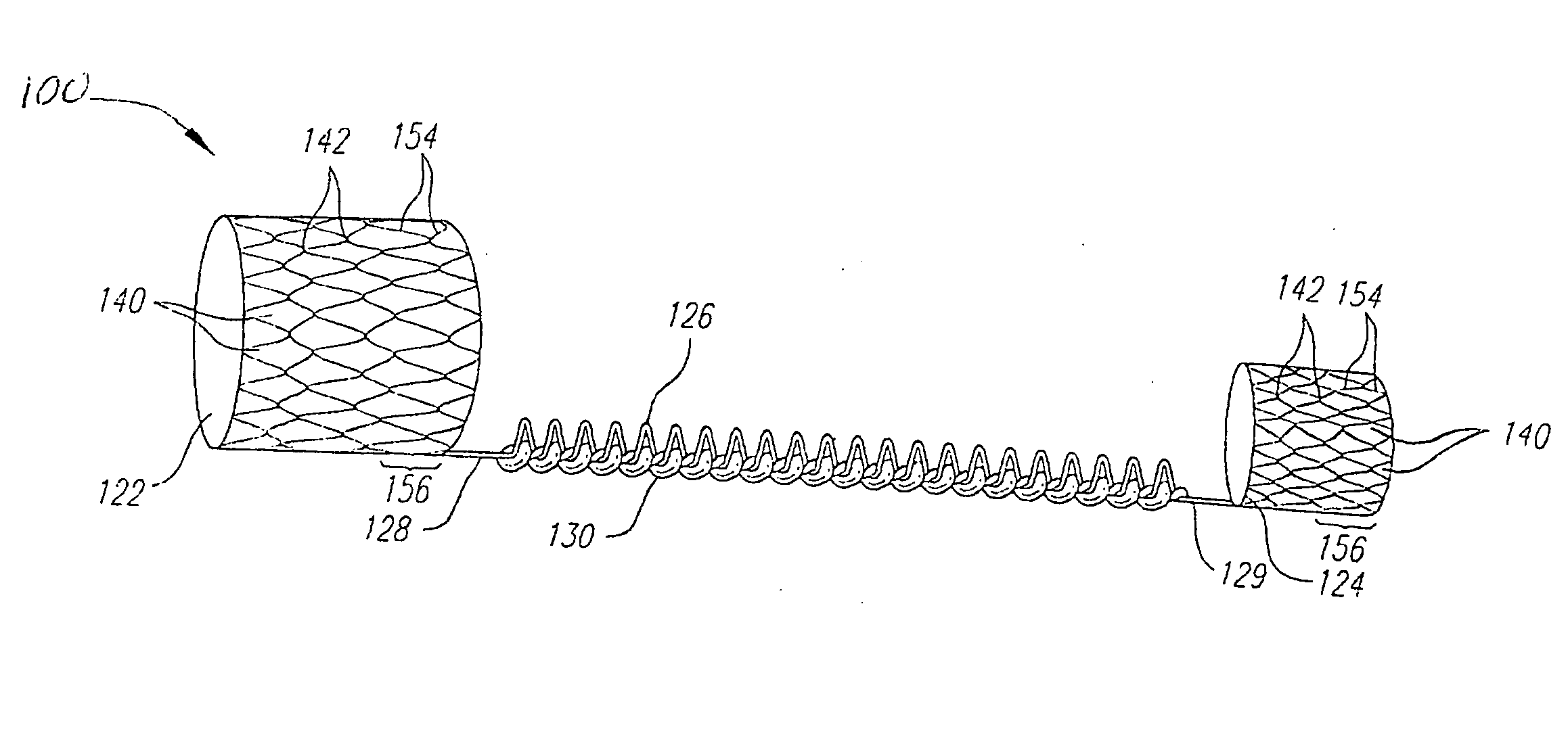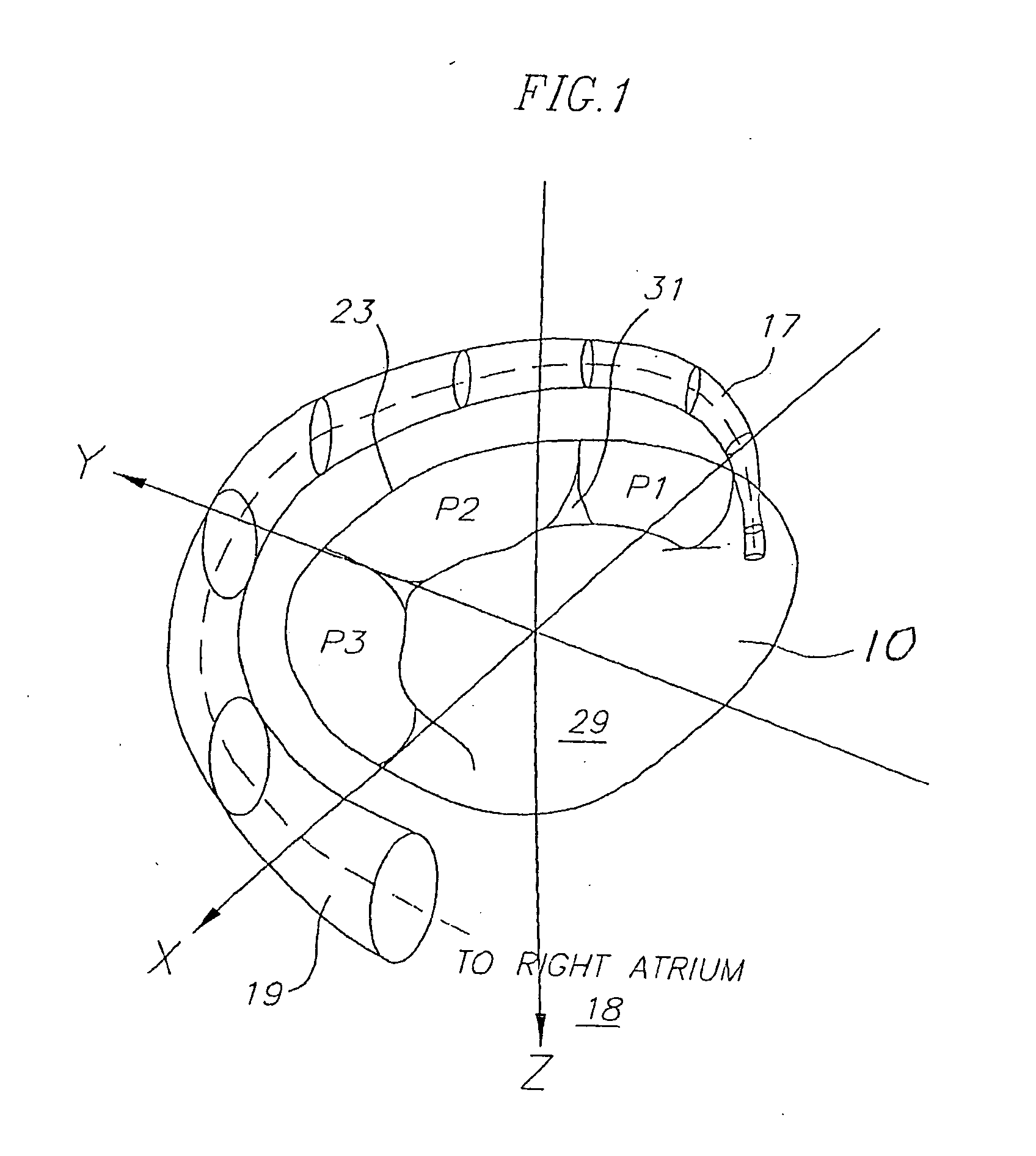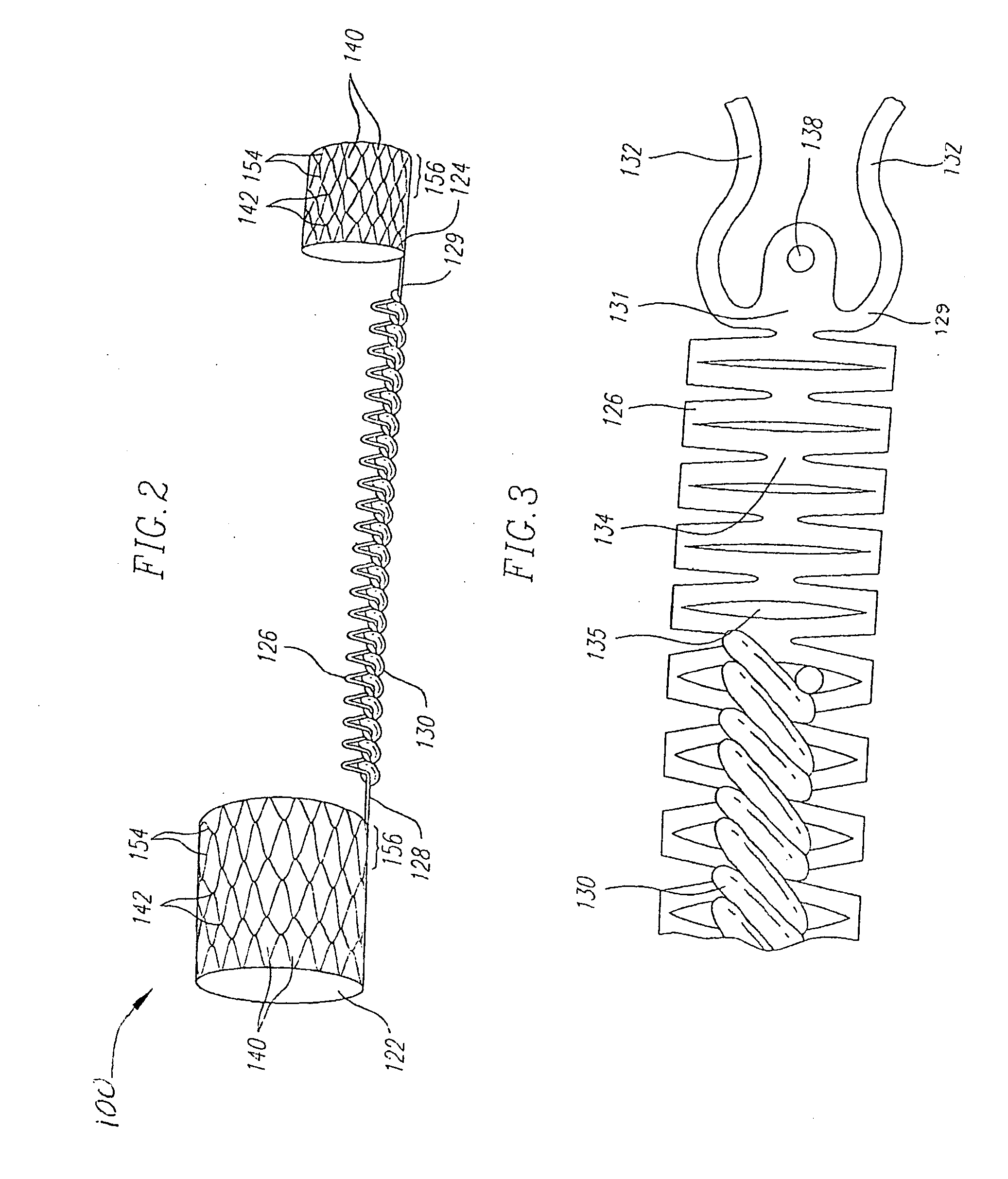Anchoring system for medical implant
a technology of an anchoring system and an implant, which is applied in the field of medical implants, can solve problems such as incomplete coaptation of valve leaflets, and achieve the effect of reducing or eliminating the regurgitation of mitral valves
- Summary
- Abstract
- Description
- Claims
- Application Information
AI Technical Summary
Benefits of technology
Problems solved by technology
Method used
Image
Examples
Embodiment Construction
[0037] Various embodiments of the present invention depict medical implants and methods of use that are well-suited for treating mitral valve regurgitation. However, it should be appreciated that the principles and aspects of the embodiments disclosed and discussed herein are also applicable to other devices having different structures and functionalities. For example, certain structures and methods disclosed herein may also be applicable to other medical devices configured for implantation in a blood vessel. Furthermore, certain aspects of the present invention may also be used in conjunction with other medical devices or other procedures not explicitly disclosed. The manner of adapting the embodiments described herein to various other devices and functionalities will become apparent to those of skill in the art in view of the description that follows.
[0038] As used herein, “distal” means the direction of a device as it is being inserted into a patient's body or a point of referen...
PUM
 Login to View More
Login to View More Abstract
Description
Claims
Application Information
 Login to View More
Login to View More - R&D
- Intellectual Property
- Life Sciences
- Materials
- Tech Scout
- Unparalleled Data Quality
- Higher Quality Content
- 60% Fewer Hallucinations
Browse by: Latest US Patents, China's latest patents, Technical Efficacy Thesaurus, Application Domain, Technology Topic, Popular Technical Reports.
© 2025 PatSnap. All rights reserved.Legal|Privacy policy|Modern Slavery Act Transparency Statement|Sitemap|About US| Contact US: help@patsnap.com



